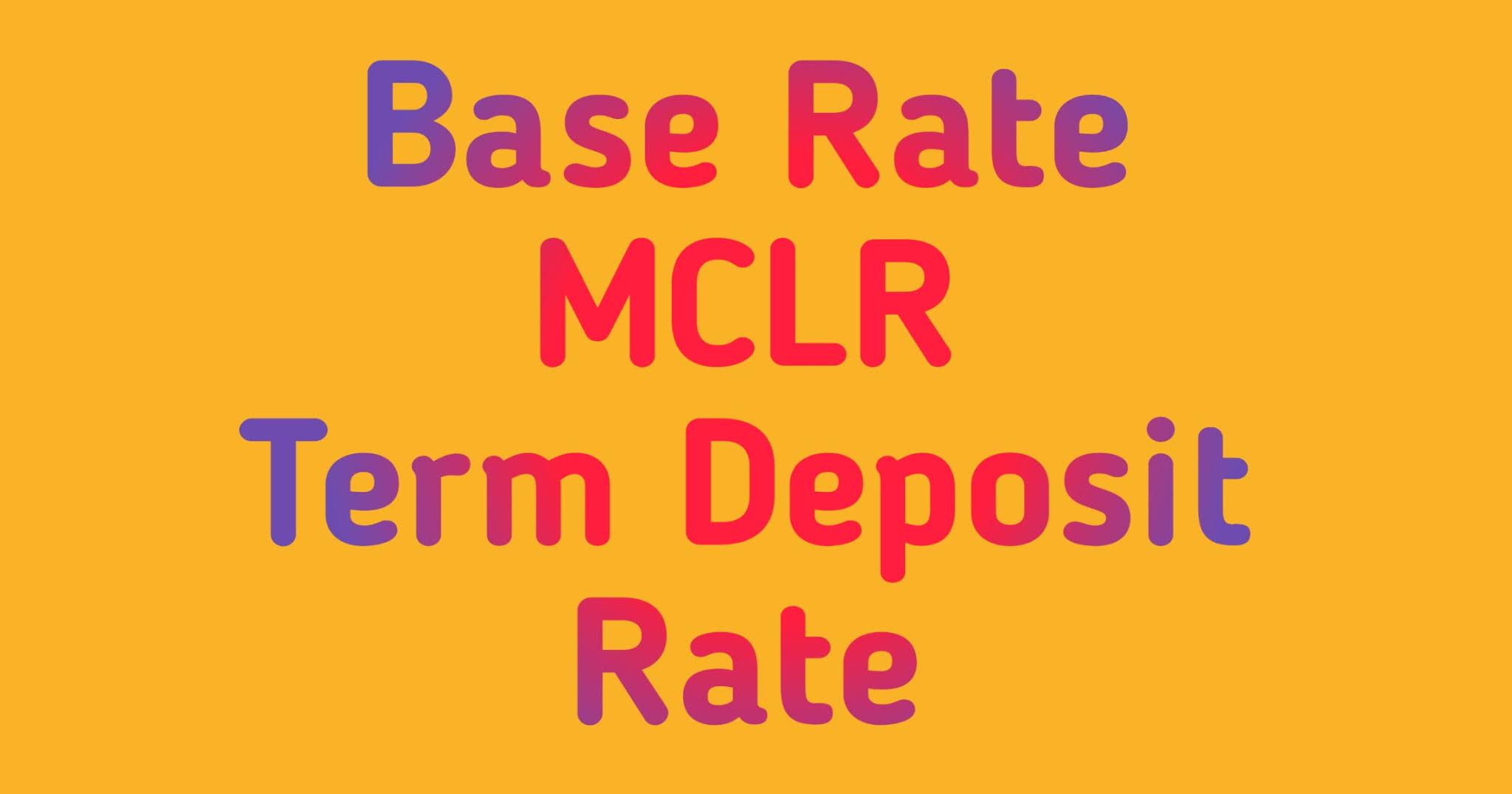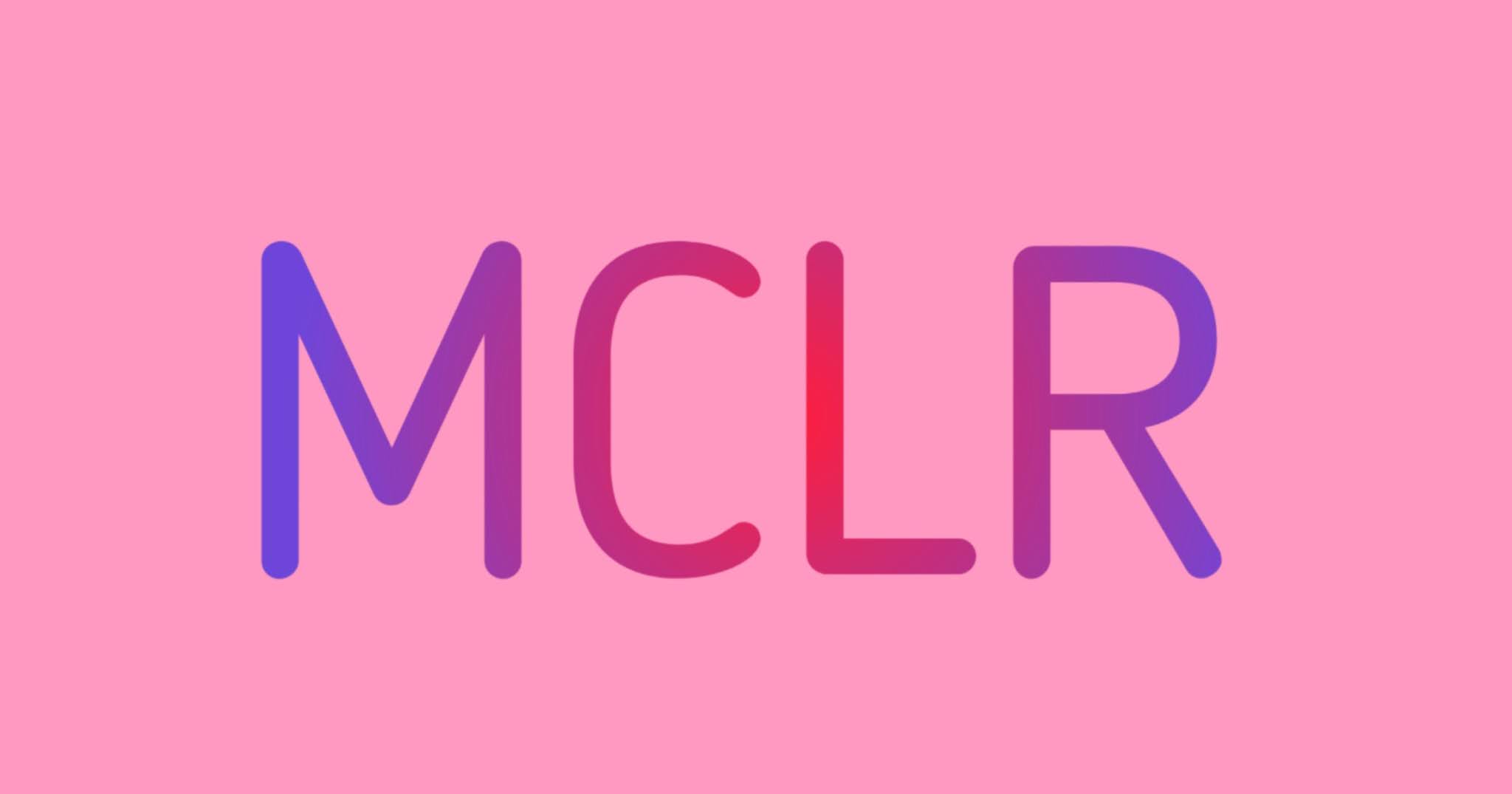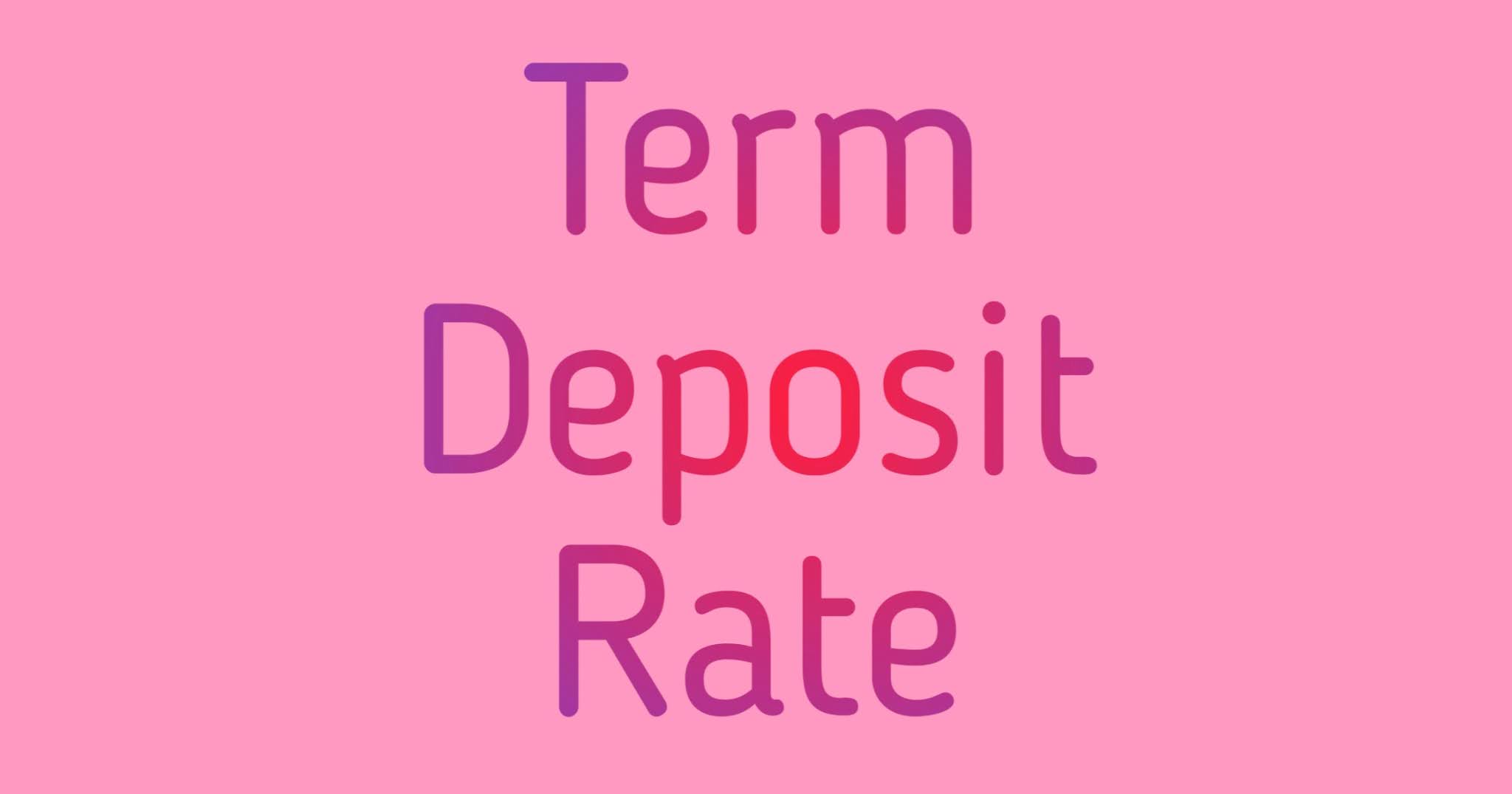BASE RATE
The monetary area in India has gone through numerous changes in the previous scarcely any years. One of the results of this is banks are given the opportunity to decide loan rate percentages all alone as long as they follow the RBI rules. While banks can set and change loan rates, they likewise need to think about the RBI, which has presented a few changes on financing costs with the presentation of ideas, for example, Prime Lending Rate Regime and Benchmark Prime Lending Rate (BPLR) so the rates of loan offered by various banks are pretty much, comparative and serious. The base rate is probably the most recent change presented by the RBI.
What is Base Rate?
Base rate is characterized as the base loan cost set by the RBI above which Indian banks are not allowed to provide loans to their clients. Except if there is an order of government, RBI decide indicates that no bank may offer loans at a rate lower than the base rate. Presented in June 2010, base rate is essentially viewed as the standard loaning rate offered by business banks. It is chosen to build straightforwardness and to guarantee that banks pass the advantage of lower financing costs to borrowers. Advances are valued by adding the base rate to an appropriate spread, subject to the credit hazard premium.
Figuring of Base Rate
The base rate is determined by the nation's central administrative body, the Reserve Bank of India. RBI decides the base rate so as to carry uniform rates to every Indian bank, regardless of whether they are nationalized banks or they have a place with the private division. The base rate includes all components of loaning rates that are regular among borrowers of various classifications. Base rate estimation is finished by taking a ton of elements into thought. These incorporate the expense of branches, the managerial expenses borne by the bank, the productivity of the bank in the past monetary year and not allocated overhead expenses in addition to other things. The bank likewise thinks about some different elements with specified loads while figuring the base rate of the moneylender. To figure the new benchmark, the greatest weight falls on the expense of Branches. All things considered, banks do have the opportunity to consider the expense of branches of different residencies when they compute their base rate.
Components deciding the Base rate
Now that we recognize what is base rate in India and how it is determined, how about we take a look at the different elements deciding the base rate. As mentioned over, each bank has the opportunity to decide its base rate considering the rules and standards set by the RBI. According to RBI rules, base rate must incorporate all components of loaning rates which are basic across different classifications of borrowers. While it is possible that base rate might be diverse for various banks, there are four significant segments that ordinarily decide the base rate set by a specific bank. These incorporate
- Cost of Interest provided, for example interest given on Saving or Fixed deposits by the bank
- Working expenses
- The base pace of profits
- Cost of the Cash Reserve Ratio
The base rate offered by two distinct banks might be diverse attributable to any of these previously mentioned factors, with the distinction in loan costs being the most widely recognized factor.
MCLR
Marginal cost of funds-based lending rate (MCLR) is an interior reference rate for banks fixed by the Reserve Bank of India (RBI). It is utilized to characterize the base rate of interest that a bank can charge to moneylenders on the loans it provides – regardless of whether those are large Home Loans, little Personal Loans, simple loans, quick credits, secured or unsecured loans.
Banks can't loan underneath the MCLR or they will face legal administrative issue. However, they can loan underneath the MCLR in some uncommon cases with earlier approval from the RBI. The loan cost is resolved assuming the minor expense or regular expense of arranging every rupee for the borrower.
When did MCLR come into power?
The RBI swapped the base rate framework for deciding loan rates with the MCLR framework on Apr 01, 2016. While borrowers who were given loans before Apr 01, 2016 are as yet under the old base rate and benchmark prime loaning rate (BPLR) framework, they can select to move to the MCLR rate on the off chance that they believe it's helpful.
Why MCLR?
For what reason did the national bank(RBI) move banks to the MCLR framework when the base rate and BPLR were working fine? Seemingly, the RBI was not happy with the adequacy of the base rate framework. That is the reason RBI chose to move banks to the new framework to serve borrowers and the nation's economy.
The RBI made sense of that the base rate framework was not fine to changes in the strategy rates, which is essential for the correct execution of financial strategies in the nation. Before the national bank made it compulsory for banks to follow the MCLR framework, there was no uniform framework set up. Banks were ascertaining the base rate dependent on different strategies according to their circumspection. While some were utilizing normal expense of assets, others were utilizing mixed expense of assets and minimal expense of assets.
In particular, the RBI moved banks to the MCLR framework to guarantee faster transmission of its strategy rates into banks' loaning rates. Hence, the MCLR was presented with the accompanying goals:
- To upgrade transmission of RBI strategy rates into the nation's financial framework.
- To Improve straightforwardness in the framework used by banks to fix financing costs on credits.
- To Guarantee appropriateness in credit loan costs for the two banks and borrowers.
- To Give an upper hand to banks and lift their drawn out worth while adding to the nation's monetary development.
How does the MCLR influence the economy?
The financial framework is the backbone of the economy and any negative or positive changes in the division legitimately impacts the economy. The MCLR framework plans to improve the confidence of the individual borrowers and business in the financial segment. By improving straightforwardness in how loaning rates are determined, it supports more people and businesses to depend on the nation's financial framework for their credit needs.
In addition, the MCLR, by improving the quicker and compelling transmission of strategy rates, helps the nation's budgetary administrative body to take more powerful financial arrangement measures. The MCLR framework will likewise guarantee that loan cost cuts by the RBI will legitimately reduce Equated Monthly Installments (EMIs) on Home Loans, little Personal Loans, Business Loans, and so on. Also, it will assist borrowers with getting quick loans from banks.
How to discover a bank's MCLR rate?
As indicated by RBI's guideline, banks are needed to distribute their base credit rate or MCLR for different residencies consistently. These residencies/developments are for the time being, multi month, 3 months, a half year, 1 year and some other residency that the bank may want to distribute. You can discover the MCLR pace of various banks by visiting their official sites.
Is it compulsory for me to interface my loan to MCLR?
The appropriate response is Yes, if you have taken an Auto Loan, Travel Loan or even a little Personal Loan. No, in case that you have taken a Home Loan or Business Loan.
Successful Oct 01, 2019, the RBI introduced the outside benchmarking framework with substitute the MCLR for Home Loans, Business Loans and working capital advances, and so forth. This new loaning rate framework is just relevant for credits with skipping loan rates and isn't relevant for fixed planned loans. Additionally, the outer benchmarking framework might be executed in banks. Non-Banking Financial Companies (NBFCs) are out of its usage.
With this new framework set up, banks are currently ready to offer outer benchmark-connected loans that are either associated with the RBI repo rate, Government of India depository bills or some other standard loan rate given by the Financial Benchmarks India Pvt. Ltd.
These activities taken by the RBI to improve straightforwardness and adequacy in the financial framework is outstanding. Ideally, these progressions will assume a major part in boosting retail utilization and improving business confidence in the nation.
Term Deposit
What Is a Term Deposit?
A term Deposit is a fixed-term forecast that include the deposit of cash into a record at a monetary establishment. Term Deposit forecast simply convey momentary developments going from one month to a couple of years and will have alternate measures of required least deposits.
The forecast must understand when purchasing a term deposit that they can pull back their money simply after the term closes. Now and again, the record holder may permit the financial specialist early end for withdrawal in the event that they give a few days notice. Likewise, there will be a punishment surveyed for early end.
Term Deposit Explained
At the point when an account holder deposits money at a bank, the bank can utilize that cash to provide loan to different buyers or organizations. As an end-result of the option to utilize these cash for loaning, they will pay the customers as an encouragement on the account balance. With most deposit accounts of this nature, the holder may pull back their cash whenever. This makes it hard for the bank to know early the amount they may loan at some random time.
To defeat this issue, banks offer term deposit accounts. A customer or client will deposit or put the cash into one of these accounts, making a deal to avoid pulling back their cash for a fixed period as a side effect of a higher rate of interest paid on the accounts.
The income earned as an interest on a term deposit account is marginally higher than that paid on standard reserve funds or enthusiasm bearing financial deposits. The expanded rate is on the base that access to the cash is restricted for the time span of the term deposit.
Term deposits are an incredibly protected investment and are exceptionally speaking to traditionalist financial specialists. The budgetary instruments are sold by banks, finance organizations, and credit associations. Term deposits sold by banks are guaranteed by the Federal Deposit Insurance Corporation (FDIC). The National Credit Union Administration (NCUA) gives inclusion to those sold by credit associations.
How a Bank Uses a Term Deposit
In the event that a client places cash in a term deposit, the bank can put the cash in other monetary items that pay a higher rate of return (RoR) than what the bank is paying the client for the utilization of their assets. The bank can likewise loan the cash out to its different customers, accordingly getting a higher loan interest from the borrowers when contrasted with what the bank is paying in enthusiasm for the term deposit.
For instance, a moneylender may offer a 2% rate for term stores with a two-year development. The assets kept are then organized as credits to borrowers who are charged 7% in enthusiasm on those notes. This distinction in rates implies that the bank makes a net 5% return. The spread between the rate the bank pays to its clients for deposits and the rate it charges its borrowers is called net premium edge. Net premium edge is a benefit metric for banks.
Banks are organizations, in that capacity, they need to pay the most minimal rate feasible for term deposits and charge an a lot higher rate to borrowers for advances. This training builds their edges or gainfulness. Nonetheless, there is an equalization the bank needs to keep up. In the event that it pays too little premium, it won't draw in new financial specialists into the term deposit accounts. Likewise, on the off chance that they charge excessively high of a rate on credits, it won't pull in new borrowers.











0 Comments
We encourage respectful and relevant comments. Thank You!
Emoji